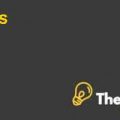
Korea Occupational Safety and Health Agency (KOSHA)
Description of the organizational Setting
(KOSHA) Korea Occupational Safety and Health Agency has twelve departments in its headquarters, and it isresponsible for the planning of the projects and coordinating them with the regional offices of KOSH. KOSH has about twenty seven regional offices around the country, which are responsible for the implementation of occupational safety and health in their respective regions assigned by the head office of the KOSH.
KOSH was founded on December 1997, as a government financed organization. KOSHreceives subsidies from the Korean government in accordance with the act of Korean industrial safety and health agency in order to ensure the safety of workers from occupational accidents and to make fool proof occupational environment for the workers.
Secondly, KOSH provides consultancy services to the organizations to on the occupational safety and health.For doing so KOSH used to train the employers and employees so that how they can avoid from any loss caused by health and safety issue within the organization.
Twenty seven regional offices have five teams each. These are:
- Occupational safety team (covers the prevention of accidents in manufacturing industry).
- Occupational health team (covers with health issues at workplace).
- Construction safety team (covers with preventing accidents at construction site).
- Service industry team(covers with preventing accidents in service industry).
- General affair team (covers with budget, accounting, HR and performance evaluation).
The annual goals are assigned from KOSHA Headquarter to the regional offices. KOSHA’sheadquarter has linked the salary increase of the director level officer with the annual goal achievements.Onthe other hand, the salaries of other employees are increased by certain percentage per year across the board.
Description of the organizational behavior:
Mr. Lee’s behavior:
Mr. Lee is working in KOSHA since23 years; his reputation was based on his efforts in making the team work hardto achieve whatever he wanted from the team. Mr. Lee was transferred to Gyeonqnamregional office from the Seoul regional office.Due to the behavior of Mr. Lee the team members at the Gyenoqnam regional office did not welcomed him.
The behavior of Mr. Lee continued at his new regional office as he give the team members 10% more target then the allocated goals by the headquarter.The secondfactorrelated to the behavior of Mr. Lee is that he only wants the team to attain the target because his salary is associated with the result. The third factoris the extra goals allocation to certain people of the team and less allocation to someone else.
The last factor is that the evaluation process of Mr. Lee is biased, as he used to evaluate favorably to that person who belongs to his city of origin.
Mr. Kwon’s behavior:
Mr. Kwon is not ready to adopt the extra allocation of the goals, not because of itsdifficultybut due to the extra time he will have to give to the tasks, but he refused to work after the office time. Due to the refusal of doing overtime no one team member get the support from him and the cooperation was minimized from his side.
Mr. Ahn behavior:
Mr. Ahn has negative attitude towards the organization as he feels that he has been not promoted according to his experience and expertise and the organization has not fairly treated him.
Mr. Kim’s behavior:
The audit team has found in their audit at Gyenoqnam regional office that Mr. Kim has intentionally manipulated and falsifies the performance data...............
This is just a sample partial case solution. Please place the order on the website to order your own originally done case solution.











